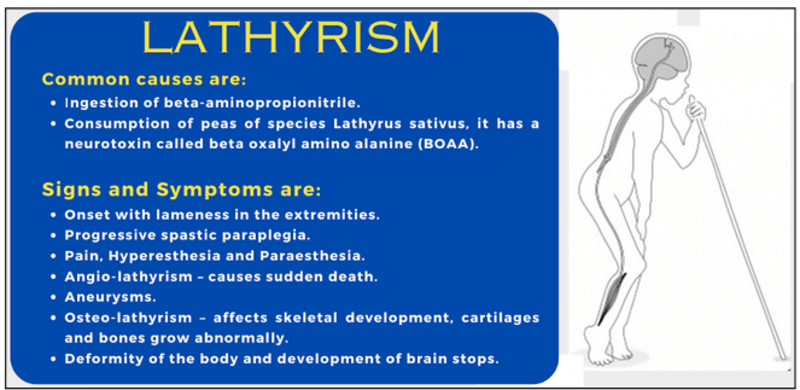News Excerpt:
Scientists are working to aid research on improved varieties of grass pea.
- In January 2023, researchers from the National Agri-Food Biotechnology Institute, Mohali, published the genome of Pusa 24.
About Lathyrism:
- Lathyrism is one of the oldest known neurotoxic disorders, with symmetrical spastic leg weakness, subacute or insidious onset, with no sensory deficit, resulting from excessive consumption of grass pea (Lathyrus sativus) an environmentally tolerant legume that has seed with high protein content.
- In short it is an irreversible Neurological Disease that leads to paralysis of lower limbs.

Persistent presence of Grass pea in India:
- The use of grass pea is common among the poor, since it is one of the cheapest legumes and grows easily in fallow fields, can be rotated with any crop and needs little to no investment.
- It is also tolerant to drought, salinity and water logging and resistant to pests and biotic stress.
- In terms of nutrition, grass pea has high levels of proteins, second only to soybean, and even has the compound L-homoarginine that is beneficial to heart health.
- After the research found by the IIS (Bangalore), the chemicals responsible in the seed were -> ß-N-oxalyl-L-a, and ß-diaminopropionic acid (ß-ODAP).

Conclusion:
Grass pea, linked to lathyrism in British India, could provide food security when conventional crops are failing due to climate change.
